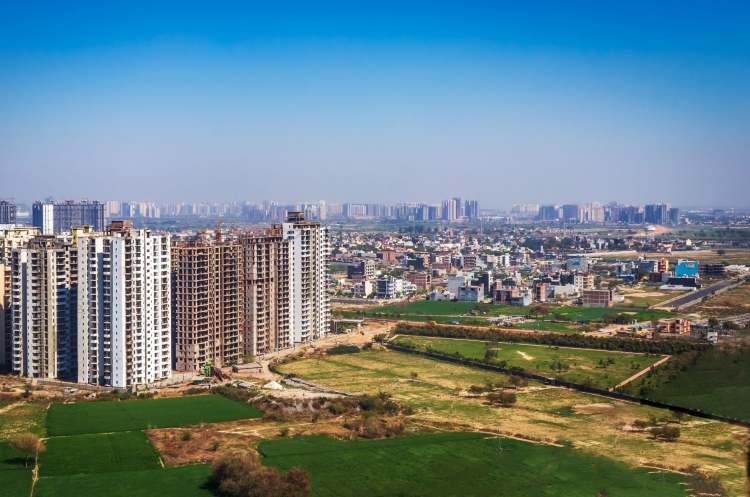Counted among India’s worst performing states on social indicators, Uttar Pradesh has been striving for an image makeover, looking to become a $1 trillion economy. The state, with a population of over 200 million, is targeting this milestone by 2029. Its strategy leans heavily on boosting exports, alongside investments in infrastructure and industry.
As part of its 2029 agenda, the Uttar Pradesh cabinet has cleared the Export Promotion Policy 2025-30, aimed at doubling exports by 2030. The policy arrives at a fraught moment in global trade, with protectionism rising in the US and Europe and supply chains being reshaped by geopolitical tensions.
The policy promises exporters grants, digital marketing support, subsidies for participating in international trade fairs, and incentives for One District One Product (ODOP) merchandise. For startups and MSMEs, the assurance of Export Credit Guarantee Corporation (ECGC) coverage lowers risks in new markets. The measures target a wide range of sectors: electronics, handicrafts, engineering goods, textiles, carpets, agriculture, chemicals, pharmaceuticals, leather, sports goods, glass and ceramics, education, medical services, travel, and hospitality.
READ I CAD fall hides rising risks for India’s trade outlook
Unlocking traditional strengths
Uttar Pradesh’s export potential is anchored in ODOP-linked products such as Moradabad’s brassware, Varanasi’s silks, Kannauj’s perfumes, Saharanpur’s woodwork, and Firozabad’s glassware. These goods enjoy global recognition but face constraints at home—high logistics costs, weak marketing, middlemen-dominated supply chains, and patchy access to quality certification.
The new policy promises to break these barriers. For traditional exporters, ECGC coverage offers a cushion against global risks. For young startups, subsidies for digital catalogues and trade fairs reduce entry hurdles into global markets.
Limits of export-led growth
Yet, exports alone cannot shoulder the weight of an economy as large as UP’s. Global demand cycles are volatile, and foreign markets are vulnerable to sudden policy shifts abroad. An over-reliance on external demand could expose the state to shocks it cannot control.
Equally important is the question of labour absorption. UP’s comparative advantage lies in labour-intensive sectors—textiles, leather, carpets, and handicrafts. Scaling these up requires more than marketing; it demands design inputs, modern production techniques, global certifications, efficient logistics, and large-scale skilling. Without these, exports may grow in value but fail to generate the employment the state urgently needs.
Uttar Pradesh’s export ambitions also face stiff competition from other states that have moved faster in integrating with global markets. Gujarat dominates in engineering goods and chemicals, Tamil Nadu has built strong ecosystems in automobiles and textiles, while Karnataka and Telangana lead in services exports. These states have shown that scale comes from clustering industries, investing in specialised logistics, and forging stronger links with global value chains. For UP, the lesson is clear: it must deepen its ODOP model into export clusters, streamline customs and port connectivity, and foster design and technology institutes that upgrade traditional crafts into globally competitive products.
Industrialisation and infrastructure
Recognising these limits, the Uttar Pradesh government has also pushed industrialisation. Industrial parks and hubs are being developed for food processing, defence manufacturing, and pharmaceuticals. The state has invested in big-ticket infrastructure: the Purvanchal, Bundelkhand, and upcoming Ganga expressways, designed as economic corridors linking producers to national and global markets.
UP has climbed in the “ease of doing business” rankings, rolled out single-window clearances, and pledged to cut compliance burdens. Power supply has improved, though rural areas still face gaps.
Bottlenecks on the ground
Progress has been uneven. Expressways make headlines, but last-mile linkages—village roads, storage facilities, and container handling—remain weak. For a carpet weaver in Bhadohi or a brass artisan in Moradabad, even reaching the expressway can be prohibitively expensive.
Most ODOP products remain artisan-driven. Competing globally requires not just inherited skills but modern design, sustainable production methods, and digital marketing know-how. Skilling programmes must therefore go beyond basics to prepare artisans and small entrepreneurs for evolving market demands.
With its vast population, Uttar Pradesh cannot afford growth that bypasses job creation. The new export policy is a step in the right direction, but its success will hinge on execution. Building an enabling ecosystem—where artisans, startups, and exporters have access to markets, finance, skills, and infrastructure—will be the true test.
Policy ambition is clear. What remains is the harder, less glamorous task of converting ambition into jobs and prosperity.

